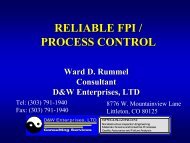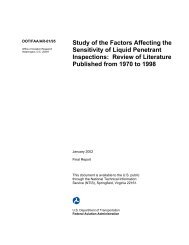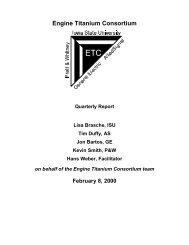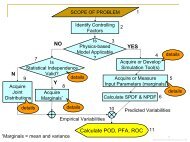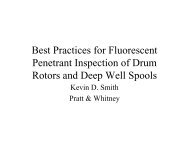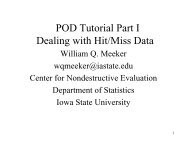Engine Titanium Consortium - Center for Nondestructive Evaluation ...
Engine Titanium Consortium - Center for Nondestructive Evaluation ...
Engine Titanium Consortium - Center for Nondestructive Evaluation ...
You also want an ePaper? Increase the reach of your titles
YUMPU automatically turns print PDFs into web optimized ePapers that Google loves.
to firmly fixture and work with a number of these rotating drivers. Schematics or actual rotating<br />
drivers were made available <strong>for</strong> this design. The probe translation device will be adaptable to<br />
different engine part numbers. Figure 2 shows a schematic of the preliminary design of the probe<br />
translation device. The following requirements were imposed during the design process:<br />
1. Fixtured alignment to control wobble of probe while translating through a part<br />
2. Fine X-Y plane adjustment to center probe within bolt hole diameter<br />
3. Machine control of probe travel through bolt holes by means of selectable fixed transverse<br />
speeds of zero, 0.100, and 0.200 inches/second in a helical scan pattern<br />
4. Rapid adjustable automatic translation retraction to a start next scan position<br />
5. Scan limit switch to prevent excess travel of probe<br />
6. Minimum of three inches of probe translation travel<br />
7. Slip clutch to prevent burn-out of translation motor<br />
8. Use of exchangeable bolt-on adapter plates <strong>for</strong> fit to specific parts/bolt hole patterns<br />
9. Adaptability to Uniwest probe rotating driver, Roman Elotest, Foerster, Zetec, etc as provided.<br />
10. There can be no electrical interference caused the probe translation device on the eddy current<br />
inspection process including data acquisition.<br />
11. Manufacturing cost less than $10,000<br />
Part Adapter Plate: In order to adapt the proposed bolt hole scanning system design to various<br />
parts and <strong>for</strong> the inspection of each hole, the ability to manually lift the instrument and secure it <strong>for</strong><br />
the next bolt hole must be present. This will be accomplished through an exchangeable adapter<br />
plate designed <strong>for</strong> that purpose. These adapter plates shall bolt to the bottom of the translation<br />
device. To precisely adjust the eddy-current probe within a bolt hole, a fine X-Y adjustment that can<br />
also lock the probe into the correct position within the hole is provided. Figure 3 shows an example<br />
of an adapter plate that is currently in use in production. Our plan includes the design and<br />
manufacturing of two such adapter plates <strong>for</strong> pre-selected industry applications. The selection of<br />
these applications in underway and once finalized the design of these adapter plates will be<br />
completed.<br />
Quarterly Report – January 1, 2002 –March 31, 2002<br />
print date/time: 6/6/2002 - 8:39 AM – Page 73





